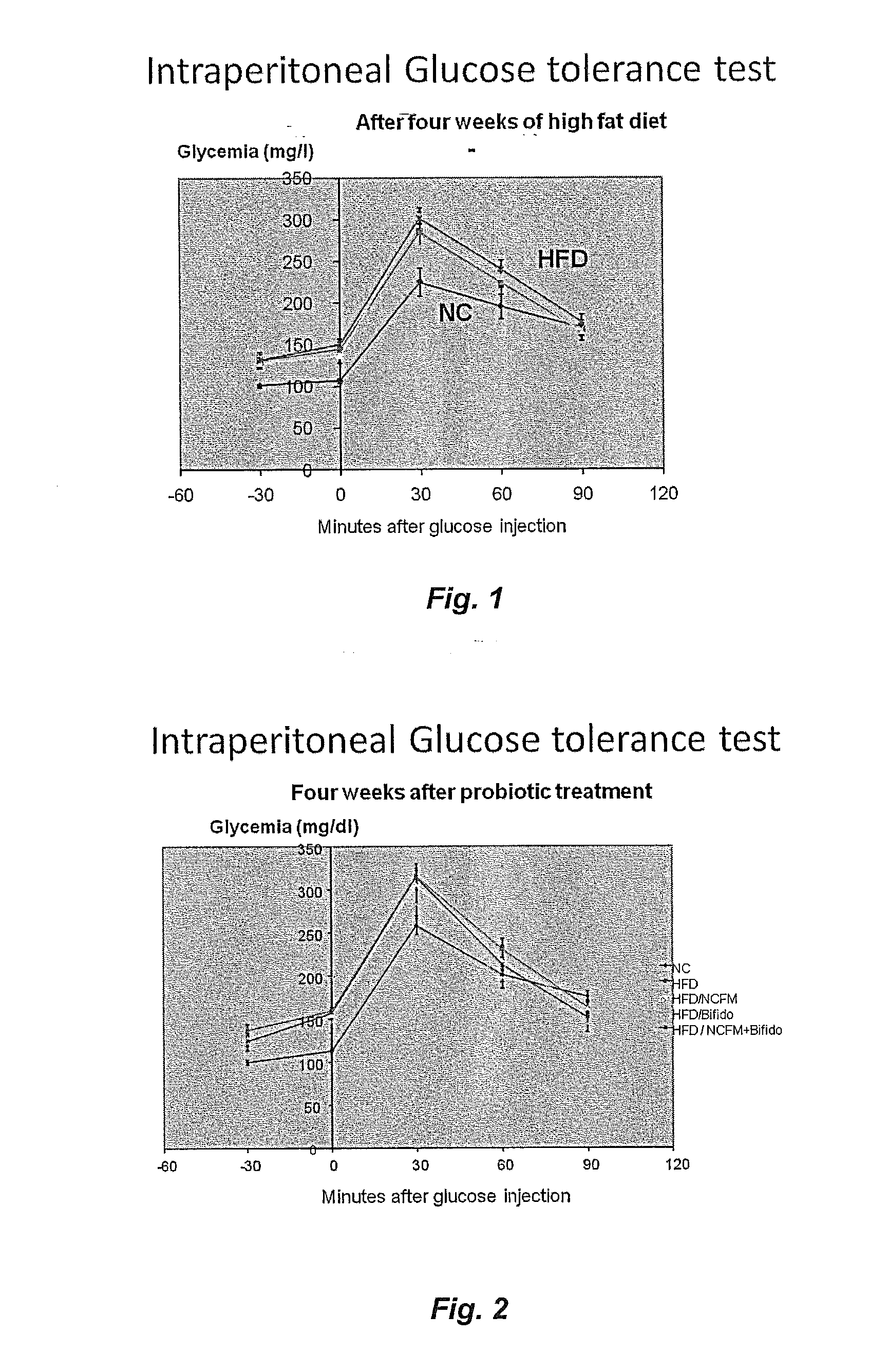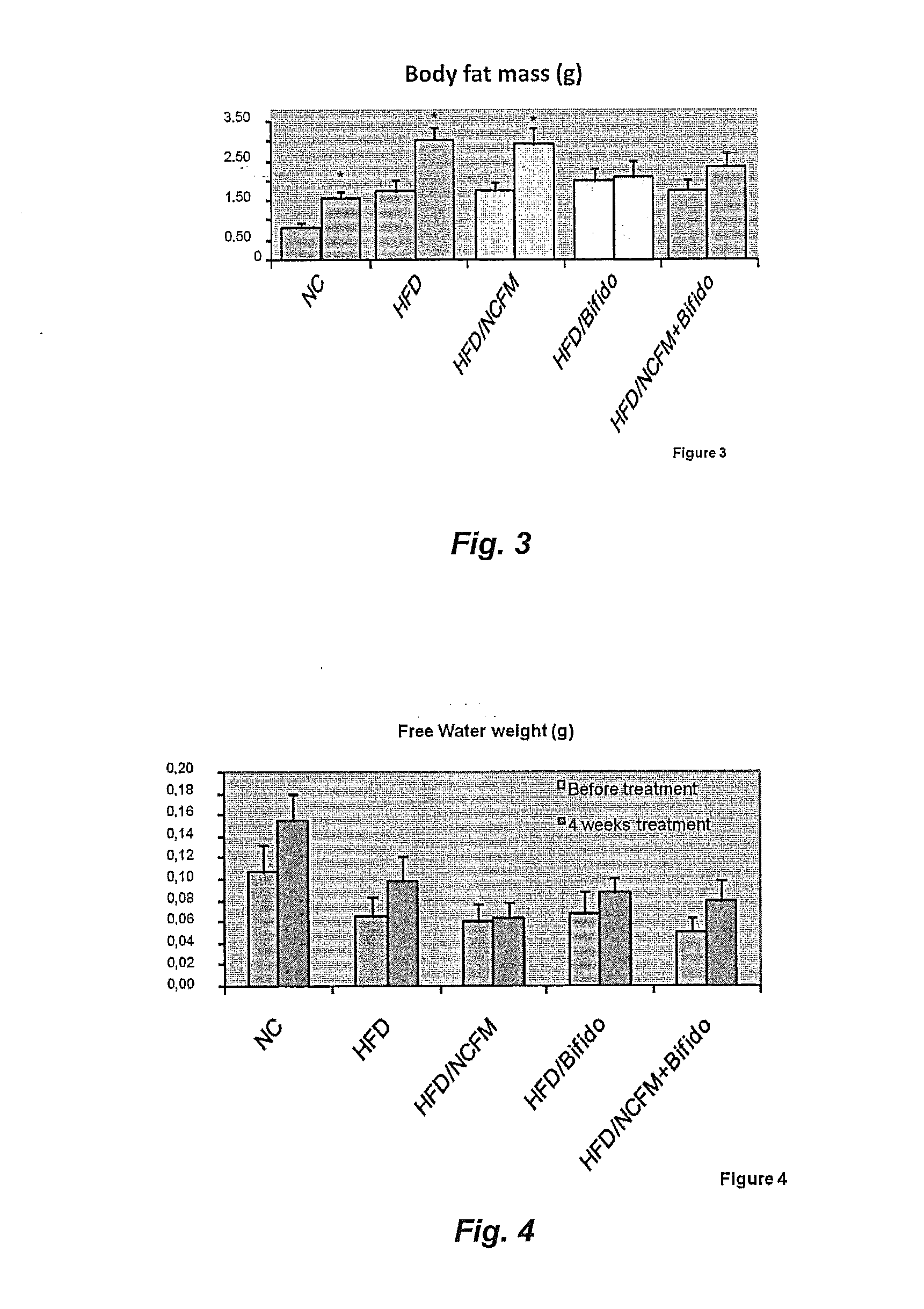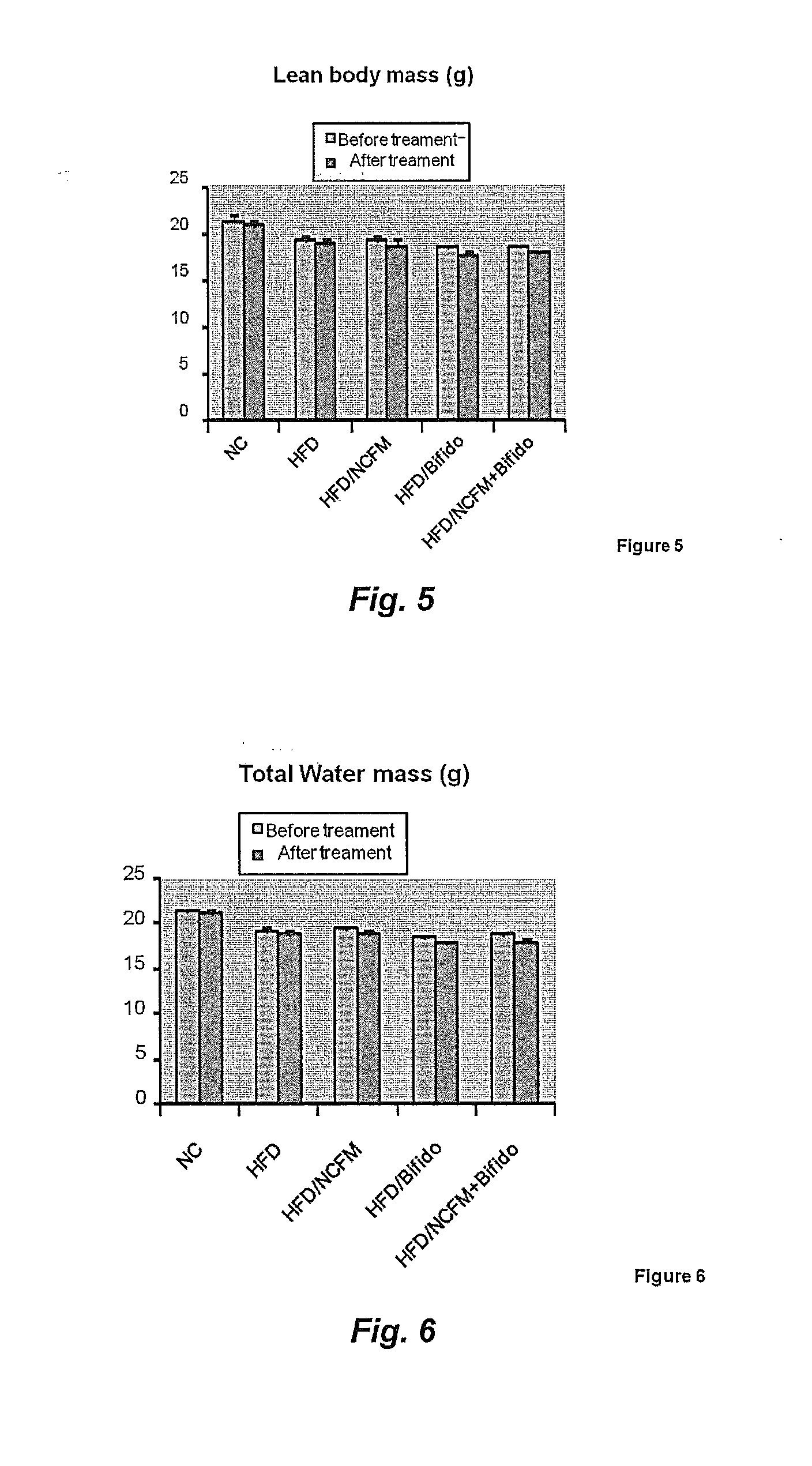Bifidobacteria for treating cardiac conditions
a technology of bifidobacteria and cardiac conditions, applied in the field of bifidobacteria, can solve the problems of high insulin requirements, many complications, and diabetes, and achieve the effects of preventing further development of pathology, normalising insulin sensitivity, and increasing fed insulin secretion
- Summary
- Abstract
- Description
- Claims
- Application Information
AI Technical Summary
Benefits of technology
Problems solved by technology
Method used
Image
Examples
example 1
Materials and Methods
Animal Model and Probiotic Treatment
[0230]A cohort of fifty C57Bl / 6 10-wk-old male mice were fed a Normal Chow (NC) (A03, SAFE, Augy, France), or a high-fat diet (HFD) (comprising 72% fat (corn oil and lard), 28% protein and Diabetes 2008, 57, 1470-81; Knauf et al. Endocrinology 2008, 149, 4768-77; Cani et al., Diabetologia 2007, 50, 2374-83; Cani et al; Diabetes 2007, 56, 1761-1772 and Turini et al. Swiss Med Wkly 2007, 137, 700-4).
[0231]The mice underwent an intraperitoneal glucose tolerance test. The area under curve was calculated and the mice dispatched homogeneously according to the different experimental groups or ten mice per group (10 mice per group). The mice were fed four more weeks with a normal chow (n=10) or a HFD (n=40). The HFD mice were treated daily for 4 weeks as follows with, 1. Vehicle treated, 2. Bifidobacterium animalis subsp. lactis strain 420 (B420) (109 / bacteria per mouse), 3. Lactobacillus acidophilus NCFM (NCFM) (109 / bacteria per mous...
example 2
Materials and Methods
[0255]A cohort of C57Bl / 6 10-wk-old male mice were a high-fat diet (HFD) (comprising 72% fat (corn oil and lard), 28% protein and 9 bacteria per mouse), polydextrose (PDX) (0.2 g / day), the antidiabetic drug metformin (MET) (2 mg / mL drinking water), and various combinations of these. Control mice were treated with saline. Mice were housed in a controlled environment (inverted 12-h daylight cycle, light off at 10:00 a.m.). Blood glucose, insulin concentration and HOMA-IR were measured from plasma in fasted state.
Results
[0256]Treatment either with B420 alone or the combination of B420 and polydextrose reduced fasting plasma glucose as compared to control. Metformin alone did not have effect on fasting blood glucose but a combination with metformin and polydextrose was effective (FIG. 19).
[0257]Treatment with B420 reduced fasting plasma insulin. Addition of polydextrose further improved the effect, suggesting a synergistic effect of the combination. Metformin reduce...
example 3
Materials and Methods
[0259]C57Bl / 6J mice were obtained from Jackson Laboratories. One week before the mice were 3 months old, they were started on a high-fat (58% of calories from fat)) or normal-fat diet (Research Diets Inc.) (18% calories from fat) ad libitum. At three months of age the mice started a 4-week treatment with probiotics. Treatment included a daily gavage with vehicle (saline) or Bifidobacterium animalis ssp. lactic 420 (B420) (109 CFU / day). Body weight was monitored biweekly.
Cardiac Ischemia-Reperfusion Protocol
[0260]Following each gavage sequence, mice were subjected to the cardiac ischemia-reperfusion protocol. Mice were anesthetized with an intraperitoneal injection of 250 mg / kg tribromoethanol, intubated and ventilated with 0.5-2.0% isoflurane. To maintain body temperature and restore potential loss of fluid, 500 μl of warmed sterile saline was injected into the dorsal subcutaneous space. The heart was exposed and the left coronary artery was visualized following...
PUM
 Login to View More
Login to View More Abstract
Description
Claims
Application Information
 Login to View More
Login to View More - R&D
- Intellectual Property
- Life Sciences
- Materials
- Tech Scout
- Unparalleled Data Quality
- Higher Quality Content
- 60% Fewer Hallucinations
Browse by: Latest US Patents, China's latest patents, Technical Efficacy Thesaurus, Application Domain, Technology Topic, Popular Technical Reports.
© 2025 PatSnap. All rights reserved.Legal|Privacy policy|Modern Slavery Act Transparency Statement|Sitemap|About US| Contact US: help@patsnap.com



